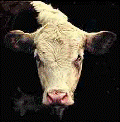Animal Science, Department of

Department of Animal Science: Dissertations, Theses, and Student Research
Date of this Version
Spring 4-20-2011
Document Type
Dissertation
Abstract
The objective of this dissertation was to test different inclusion rates of dried distillers grains with solubles (DDGS) with or without enzyme supplementation. Study one was conducted to test DDGS at 0, 5, 10, 15, 20, or 25% on egg production parameter (24 through76 wk). As DDGS increased, egg wt. decreased during Phase I. However; no difference in egg wt. was observed during Phase II. Yolk color linearly increased with increasing DDGS level. Nitrogen and P retention increased as DDGS increased. Nitrogen and P excretion decreased with increasing DDGS. Study two was conducted to test DDGS inclusion of 0, 2.5, 5.0, 7.5, 10.0, or 12.5% in pullet chicks from day-old to 16 wk and their effect on growth performance. Average feed intake and overall pullet weights were similar. As DDGS increased, BW increased only in 14, 15 and 16 wk. Study three was conducted to test the effect of 5 levels of DDGS (0, 10, 20, 30 or 40%) and two levels of Allzyme SSF enzyme (0, 0.02%) in a 5 X 2 factorial arrangement on egg production parameters. Diets containing the enzyme at 0.02% had nutrient credit of 75 Kcal/kg ME, 0.1% Ca and 0.1% available P. No significant interaction effect for egg production parameters. Feed intake and egg production were similar during Phase I & II. During Phase I and II, egg mass was decreased as DDGS increased. There was no difference in interior egg quality. Specific gravity decreased in Phase II as DDGS increased. Whereas, a linear increase in specific gravity as the enzyme in Phases I and II increased. Yolk color increased with increasing DDGS. A linear increase in N and P retention was observed as DDGS increased. In summary, our results indicated that feeding DDGS to laying hens and pullets is possible at higher inclusion rates if attention is given to AA balance and availability. Allzyme SSF enzyme improved N and P digestibility and assisted in recouping a 75 kcal/kg ME.
Advisor: Sheila E. Purdum


Comments
A DISSERTATION Presented to the Faculty of The Graduate College at the University of Nebraska In Partial Fulfillment of Requirements For the Degree of Doctor of Philosophy, Major: Animal Science, Under the Supervision of Professor Sheila E. Purdum. Lincoln, Nebraska: April, 2011
Copyright 2011 Mahmoud Khaled Masa'deh